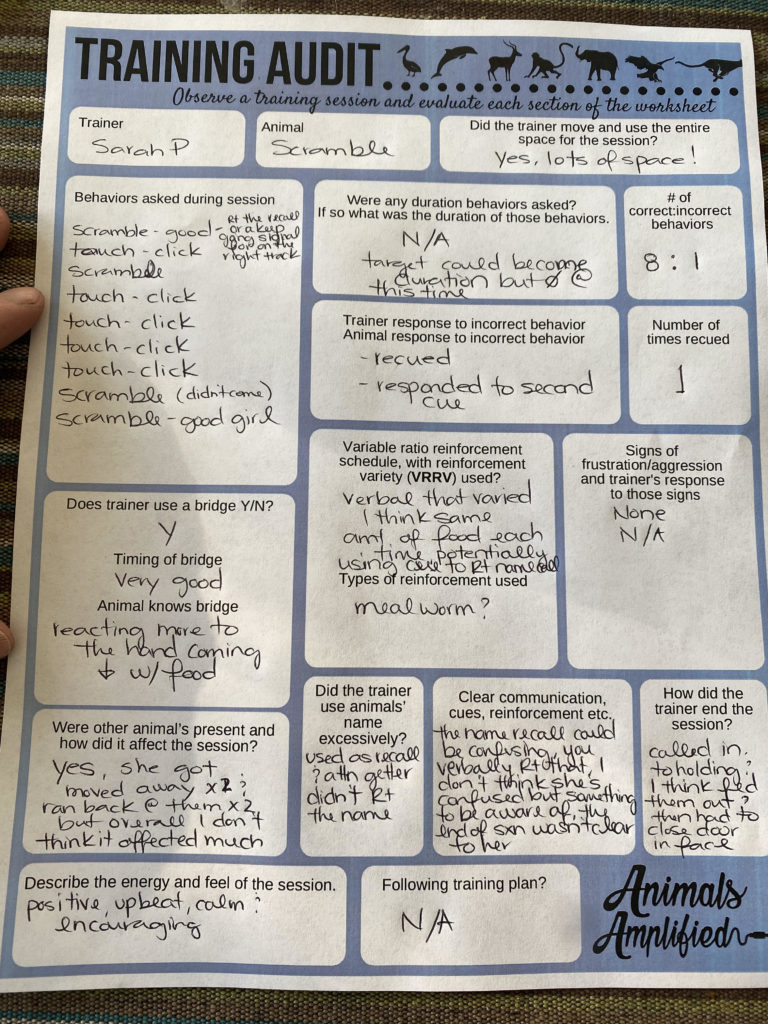Make training a priority
Have you ever worked at a facility where training came second, third, fourth, or even not at all most days? How do you go from that place to a place where training becomes a priority? We launched a new incentive program at Tanganyika Wildlife Park in Kansas called the Training Badge.
This is an optional program that keepers can choose to do, however completing each level does come with the opportunity to receive an increase in pay. Here’s the basic layout of the program:
Level 1
Learner completes the Basics of Training 10 day Challenge– This 10 day challenge comes with a daily video and homework sheet. All videos are 10 minutes or less. Topics cover the following: the science behind training, what behaviors to start with, how to choose an animal to train, the bridge and how to use it, mistakes trainers make when using a bridge, why, what, and how to use reinforcers, and then at the end of the challenge the learner completes a training plan that is reviewed by the training coordinator. They are encouraged in the lesson to choose an animal that is new to training and start with a behavior like target or station. Even our most experienced Certification Council for Professional Dog Trainers (CCPDT) trainers go through level 1 of the course. They will often choose more challenging animals who might have negative associations with training, be wary of eating in front of keepers, or not reinforced in traditional ways. Throughout the course the learner submits homework to the training coordinator at the end of each lesson and receives feedback on the homework. In order to complete level 1 the learner must complete the behavior they wrote a training plan for. Once the training coordinator has signed off on the completed behavior the learner receives a small increase for the completion. They can choose to stop at this level or continue on. However they must complete 10 continuing education credits each year in order to maintain their raise. This might be training new behaviors, attending a conference, watching a webinar and showing the ability to apply what is learned, or other opportunities.
Level 2
In Level 2 the learner completes the 11 week long Problem Solving Course. Again they submit their homework weekly to the training coordinator for feedback and evaluation. In this course we discuss what to do in the session when something goes wrong, the types of problem that exist, how to address abnormal repetitive behaviors, tips for dealing with aggression, other behavior problems, and walk through 7 different methods for problem solving behavior challenges. The training coordinator will challenge them to look deeply at each problem solving technique and ask for examples of them applying the technique with their own animals. At the end of the 11 week course the trainer must submit 5 training session videos to be audited and they must complete one audit on their own as well. If all audits are passed the learner receives another small bump in pay. Just like with level 1 they must complete 10 continuing education credits/year to maintain their increase.
The audit tool has been incredibly helpful for trainers to identify challenges they didn’t know existed! Test it out on the session below yourself!
I get VERY critical and try to be as objective as possible when evaluating a session. Want to compare your notes with mine?

Interested in implementing the training badge program at your facility? Shoot me an email to discuss group rates and options! lynnlee@animalsamplified.com
In the meantime, Happy auditing! LynnLee
